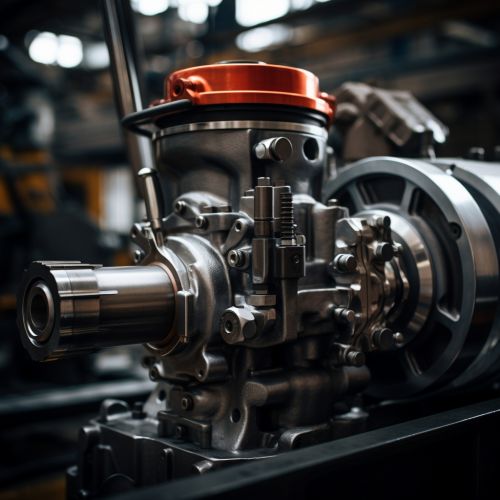Diesel Cycle
Introduction
The Diesel cycle is a combustion process used in many diesel engines. Named after its inventor, Rudolf Diesel, it is a type of internal combustion process where fuel is ignited by being subjected to high temperature and pressure, caused by compressing air in the cylinder.
Principle of Operation
The Diesel cycle operates in four distinct stages: intake, compression, combustion, and exhaust. Each stage plays a crucial role in the overall operation of the engine.
Intake
During the intake stage, the piston moves down the cylinder, creating a vacuum that draws in air through the intake valve. This process is also known as the induction stroke.
Compression
In the compression stage, the intake valve closes and the piston moves up the cylinder, compressing the air. The compression of the air increases its temperature, following the ideal gas law.
Combustion
The combustion stage begins when the piston reaches the top of its stroke (top dead center). At this point, fuel is injected into the cylinder. The high temperature of the compressed air ignites the fuel, causing it to burn and expand. This expansion forces the piston down the cylinder, producing work.
Exhaust
In the exhaust stage, the piston moves back up the cylinder, pushing the combustion gases out of the exhaust valve. This process is also known as the exhaust stroke.


Thermodynamic Analysis
The Diesel cycle is often analyzed in terms of its thermodynamic properties. This analysis involves the application of the first law of thermodynamics, the second law of thermodynamics, and the ideal gas law.
First Law of Thermodynamics
The first law of thermodynamics, also known as the law of energy conservation, states that energy cannot be created or destroyed, only transferred or converted from one form to another. In the Diesel cycle, the energy from the burning fuel is converted into mechanical work.
Second Law of Thermodynamics
The second law of thermodynamics, also known as the law of entropy, states that the total entropy of an isolated system can never decrease over time. In the Diesel cycle, this law is manifested in the dissipation of heat to the surroundings during the exhaust stroke.
Ideal Gas Law
The ideal gas law, which states that the pressure of a gas is directly proportional to its temperature and volume, and inversely proportional to the number of gas molecules, is used to model the behavior of the air during the intake and compression strokes.
Efficiency
The efficiency of the Diesel cycle is a measure of how much of the energy from the fuel is converted into useful work. It is typically expressed as a percentage, with higher percentages indicating greater efficiency. The theoretical maximum efficiency of a Diesel cycle, known as the Carnot efficiency, can be calculated using the temperatures of the hot and cold reservoirs.
Applications
Diesel cycles are primarily used in diesel engines, which are found in a wide range of applications, including cars, trucks, trains, ships, and power generation. Diesel engines are known for their high efficiency and torque, making them particularly suited for heavy-duty applications.
